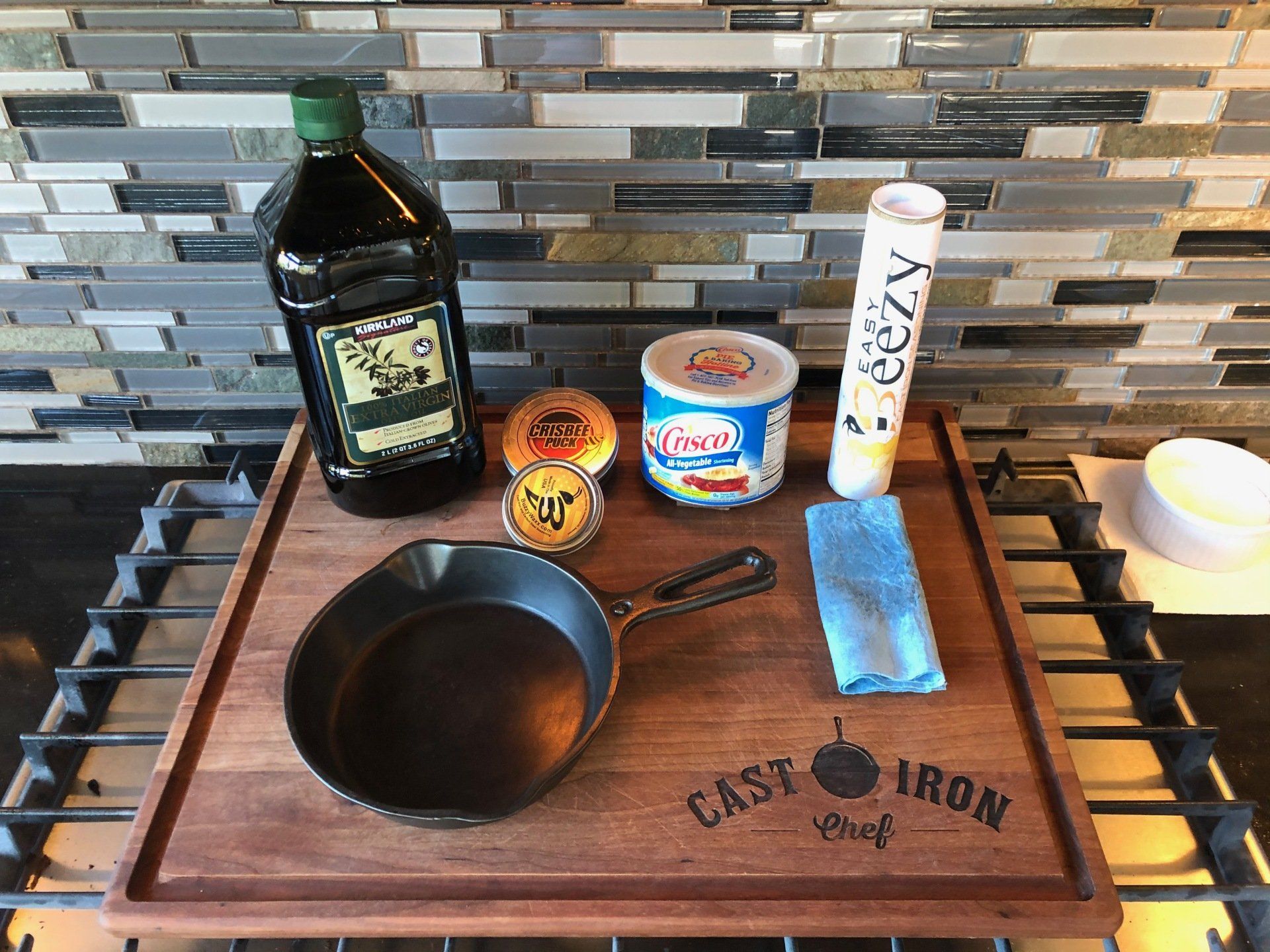There are several specialty seasoning products on the market, including Buzzywax, Crisbee and Easy Beezy. Lots of people have their favorites and swear by them. I've found that good old Crisco works great, but was curious if there was a better seasoning product out here. So I decided to do a comparison of the major seasoning products and compare them against Crisco.
Seasoning Explained
The term “seasoning” is a combination of polymerized oil and carbon residue, which creates a durable coating, created layer by thin layer. The seasoning of cast iron cookware is necessary for a few reasons:
- Seasoning enables cast iron cookware to be rust-proofed.
- Seasoning also creates a reasonably good non-stick cooking surface.
- Many fans of cast iron desire the deep black color normally imparted by regular usage.
Here are the steps for seasoning your pan. Once it’s seasoned, cooking and cleaning it correctly will help build up the seasoning.
Initial Seasoning
- Place your pan in the oven and warm it to 200˚.
- Remove the pan, and with a lint free cloth, apply a layer of Crisco to all surfaces of the pan, including the handle.
- With a separate clean cloth, wipe the pan clean.
- Increase the temperature of your oven to 300˚. Place your pan upside down on the rack, and leave in the oven for 15 minutes.
- Remove the pan from the oven and wipe it clean of any excess oil. This will help you achieve a smoother finish.
- Increase the temperature of your oven to 400˚. Place your pan in the oven for 2 more hours.
- Allow your pan to cool completely.
- Repeat two more times.
- It is now ready to go!
Proper cleaning and cooking from here on out will just add to the seasoning of your pan.
Comparing Cast Iron Seasoning Products
For more information on seasoning your cast iron, including alternative cleaning methods, go to The Cast Iron Collector.



